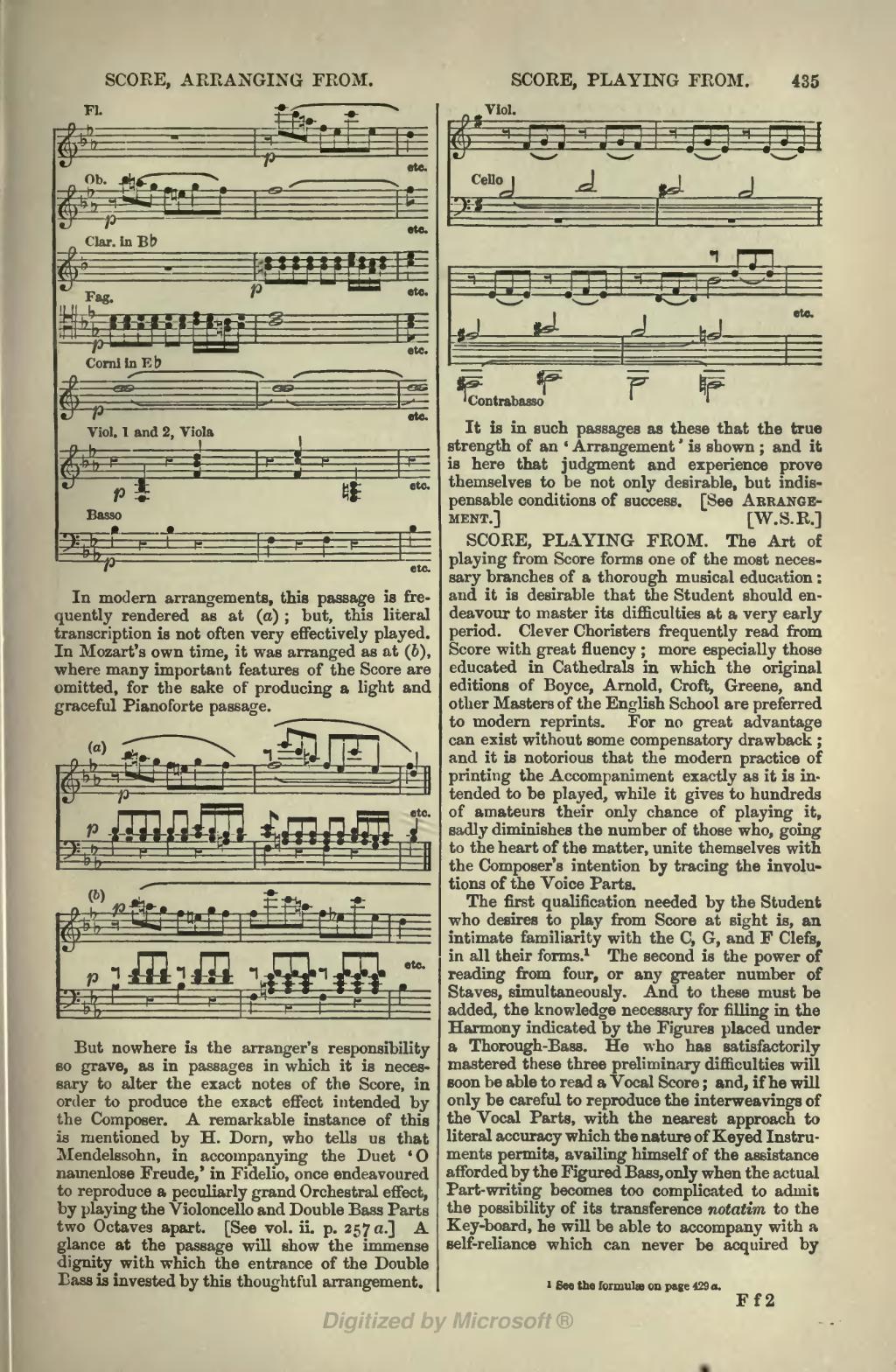
In modern arrangements, this passage is frequently rendered as at (a); but, this literal transcription is not often very effectively played. In Mozart's own time, it was arranged as at (b), where many important features of the Score are omitted, for the sake of producing a light and graceful Pianoforte passage.


But nowhere is the arranger's responsibility so grave, as in passages in which it is necessary to alter the exact notes of the Score, in order to produce the exact effect intended by the Composer. A remarkable instance of this is mentioned by H. Dora, who tells us that Mendelssohn, in accompanying the Duet 'O namenlose Freude,' in Fidelio, once endeavoured to reproduce a peculiarly grand Orchestral effect, by playing the Violoncello and Double Bass Parts two Octaves apart. [See vol. ii. p. 257a.] A glance at the passage will show the immense dignity with which the entrance of the Double Bass is invested by this thoughtful arrangement.

It is in such passages as these that the true strength of an 'Arrangement' is shown; and it is here that judgment and experience prove themselves to be not only desirable, but indispensable conditions of success. [See Arrangement.]
SCORE, PLAYING FROM. The Art of playing from Score forms one of the most necessary branches of a thorough musical education: and it is desirable that the Student should endeavour to master its difficulties at a very early period. Clever Choristers frequently read from Score with great fluency; more especially those educated in Cathedrals in which the original editions of Boyce, Arnold, Croft, Greene, and other Masters of the English School are preferred to modern reprints. For no great advantage can exist without some compensatory drawback; and it is notorious that the modern practice of printing the Accompaniment exactly as it is intended to be played, while it gives to hundreds of amateurs their only chance of playing it, sadly diminishes the number of those who, going to the heart of the matter, unite themselves with the Composer's intention by tracing the involutions of the Voice Parts.
The first qualification needed by the Student who desires to play from Score at sight is, an intimate familiarity with the C, G, and F Clefs, in all their forms.[1] The second is the power of reading from four, or any greater number of Staves, simultaneously. And to these must be added, the knowledge necessary for filling in the Harmony indicated by the Figures placed under a Thorough-Bass. He who has satisfactorily mastered these three preliminary difficulties will soon be able to read a Vocal Score; and, if he will only be careful to reproduce the interweavings of the Vocal Parts, with the nearest approach to literal accuracy which the nature of Keyed Instruments permits, availing himself of the assistance afforded by the Figured Bass, only when the actual Part-writing becomes too complicated to admit the possibility of its transference notatim to the Key-board, he will be able to accompany with a self-reliance which can never be acquired by
